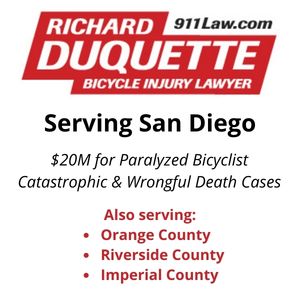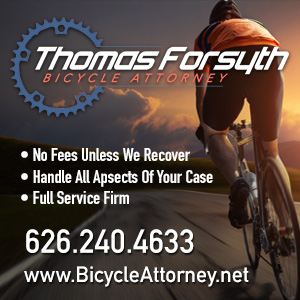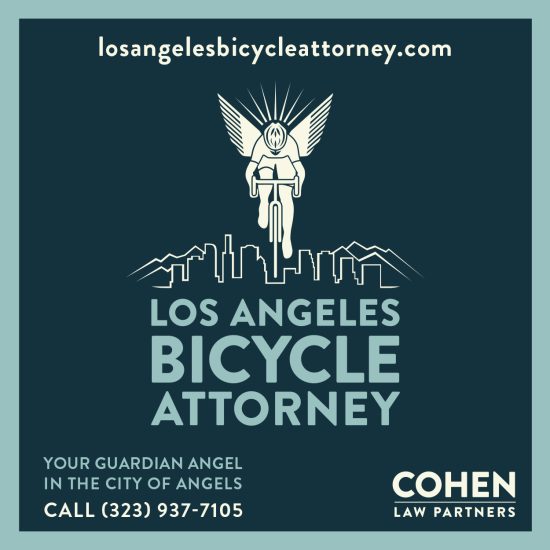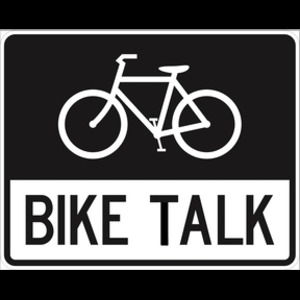Let’s take a few minutes to catch up on the latest news.
………
Streetsblog explains what to do when a police car blocks the bike lane.
And honors LAPD Sgt. David Krumer, who has been transferred to the Devonshire Division and is no longer the department’s bike liaison.
I’d like to second that sentiment.
The changes in the department have been so dramatic, it’s hard to believe it’s been just two-and-a-half years since then new Chief Charlie Beck and Assistant Chief Earl Paysinger met with cyclists at City Hall and promised things would be different.
And they have been, as the LAPD has slowly changed from the auto-centric, vaguely anti-bike perspective typical of too many police departments — see links to NYPD below — to one of the most progressive and bike-friendly departments in the U.S.
Of course, they’re far from perfect, as any number of cyclists can attest.
But the difference is night and day. And much of that credit goes to Sgt. Krumer, who has gone far beyond the extra mile to give cyclists a willing ear within the department, and worked to improve safety and ensure fairer enforcement for the city’s cycling community.
As Damien Newton notes in his story, the LAPD is working towards a plan that will place a bike liaison at each of the four Traffic Divisions within the department. That should, depending on who they place in those positions, provide even greater responsiveness for riders, as we will now be able to talk directly to someone who knows the local streets and the officers who patrol them.
But they will have very big boots to fill if they plan to follow in the footsteps of Sgt. Krumer.
We all owe him a big round of thanks.
And the department owes him a commendation.
………
Speaking of LAPD, their officers stop actress Amanda Bynes driving without a license two weeks after it was revoked. And then let her just drive away.
Yes, drive.
………
 Long-time bike and community advocate George Wolfberg forwards word that PCH will face a partial closure this weekend to accommodate the Nautica Malibu Triathlon. The road will remain open to traffic; however, the right lane in each direction will be closed on both Saturday and Sunday from 5 am to 1 pm.
Long-time bike and community advocate George Wolfberg forwards word that PCH will face a partial closure this weekend to accommodate the Nautica Malibu Triathlon. The road will remain open to traffic; however, the right lane in each direction will be closed on both Saturday and Sunday from 5 am to 1 pm.
The question is how they will handle the massive numbers of cyclists who ride PCH every weekend. Will cyclists be shunted into a single shared lane with the great mass of no doubt angry and impatient motorists? Or will they attempt to ban bikes from the roadway during those hours?
All too typical that Caltrans doesn’t even consider cyclists in their press release.
………
A first person account of what it’s like to get doored. Hollywood’s Yucca Street becomes the city’s first Bike Friendly Street, even if it is less than a mile. Gary tries to unravel the conflict between cyclists and pedestrians in Santa Monica. Santa Monica’s planned bike share program gets a half million dollar boost. Help explore a route for the first CicLAvia to the Sea. Long Beach Mayor Bob Foster is the first winner or the new National Bicycle Friendly America Leadership Award. Long Beach bike advocate/entrepreneur April Economides is chosen as General Manager of Bike Nation’s new bike share program.
Bike safety flyer from CA DMV (pdf) instructs cyclists to walk their bikes across intersections; no, really, they say you should get off your bike every block and walk it across the street. OC Gran Fondo expects 1,000 riders at the end of the month. A San Diego Lexus driver flees the scene after apparently hitting a cyclist on purpose. Cycling Unbound takes the contrarian view on bike licensing, arguing that it might actually be good for us. Former Hemet mayor has his classic Schwinn fixie stolen. The people of Oakmont reach out to support the cyclist victim of a road rage assault; thanks to @murphstahoe for the link. A San Jose woman is killed by a hit-and-run driver while riding her bike in Flagstaff AZ, where she was going to college. A San Francisco curmudgeon columnist worries that more bike lanes equal more collisions.
The Economist claims a cycling revolution is taking place in America. How to keep your bike from being stolen, more or less. A second rider was seriously injured in the LoToJa bike race that took the life of an Arizona rider this past weekend. Olympic gold medalist Kristin Armstrong’s bikes were stolen on their way back home to Boise. Mapping Bike Route 66. Courtesy of Witch on a Bicycle comes word that the popular Yehuda Moon comic is no longer hidden behind a paywall. A Texas cyclist rides cross-county, only to be killed riding his bike to work. A Michigan Methodist minister is killed while riding his bike. The New York Times belatedly discovers that people are dying on the city’s streets, and the NYPD, busy ticketing riders in Central Park, doesn’t appear to give a damn — which could be why they’re being sued once again. A Shreveport taxi driver loses control and flips his cab after seeing a cyclist in his lane, and police inexplicably put out an APB for the rider. Georgia continues the witch hunt against the mother whose child was killed by a drunk driver; the killer driver got six months, while she got three years simply because there wasn’t a crosswalk anywhere nearby. The Key Biscayne city council wants cyclists to pay a toll to fund a wall to keep them safe from killer causeway drivers; is it just me or does that sound a little backwards?
Winnipeg woman realizes to late that a semi-truck was turning towards her as she road in a crosswalk. American Tyler Farrar suffers a severe concussion and has to abandon the Tour of Britain. A writer for the Guardian says MAMILs aren’t so bad, after all. Two boys from the same Nottinghamshire school are killed in bike collisions in just three months. Evidently, cyclists aren’t even safe on closed courses, as a rider is hit by a car within site of finish line at the Etape Cymru. A 17-year old New Zealand boy charged with driving without a license pleads guilty to injuring two cyclists this past May. Bicycling in China isn’t for the faint of heart.
Finally, not all hit-and-run drivers are uncaring jerks, as a driver stops and apologizes before leaving a cyclist lying on the roadway — then claims she didn’t know she hit anyone.
And before anyone thinks I only criticize drivers, consider this short clip of a scofflaw cyclist who not only ran a red light, but couldn’t be bothered to stop for pedestrians in the crosswalk.








